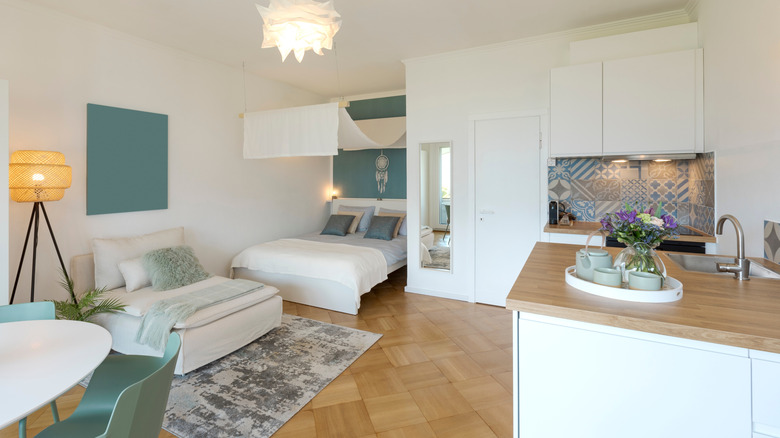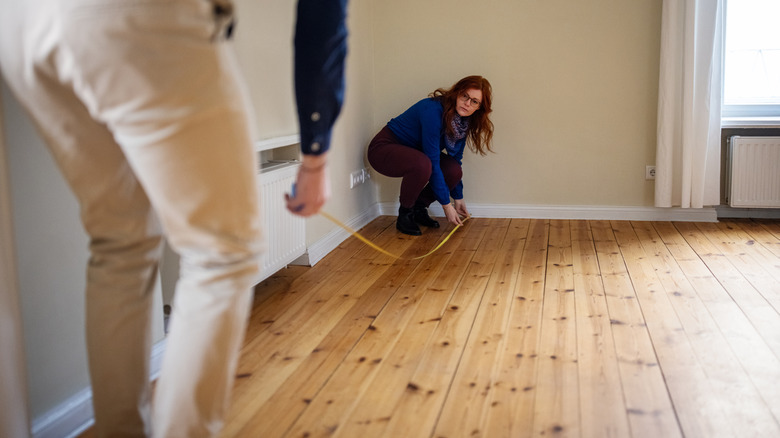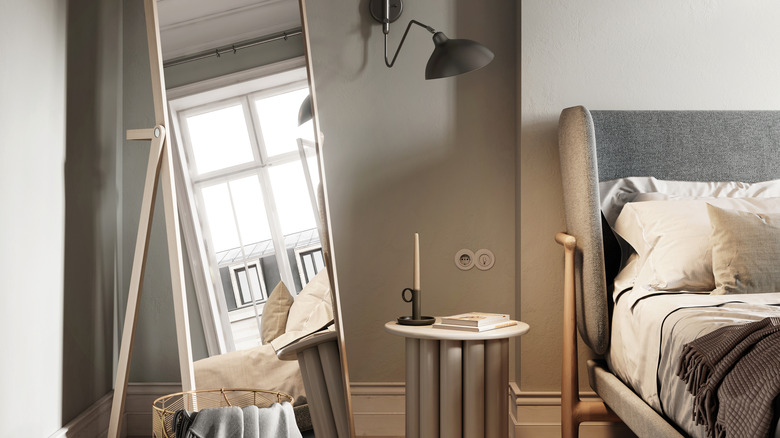One Simple Change Will Open Up Space In Your Studio Apartment
It's easy to feel a little cramped when you're living in a studio apartment. The easiest way to make a studio apartment feel less like a shoebox and more like a stylish sanctuary? Scale down your furniture. Swapping bulky, oversized pieces for slimmed-down versions can open up both physical and visual space. When you choose the right pieces, you can create function without overpowering the room. Going smaller doesn't equate to being less comfortable. Rather, it's about choosing comfort that doesn't crowd out everything else.
Strategic resizing often shares elements of minimalism, but that doesn't mean you have to fully embrace all of the minimalist design principles. It's more a recognition and acceptance of physical reality. Many studio apartment dwellers try to force traditional furniture proportions into non-traditional layouts, only to find themselves dodging armrests or blocking pathways. Downscaling opens up negative space — those gaps between and under furniture so beloved by minimalists and cats — which tricks the eye into thinking the room is bigger than it is.
Subtle shifts in your furniture selection and arrangement can deliver big visual payoffs. With the right small-space design moves, you can help make your studio apartment seem bigger without major renovations.
How to measure, visualize, and shop smart for scaled-down furniture
Before you shop, grab a tape measure to ensure you have all of the necessary dimensions of your studio, including the ceiling height and sizes of features like doors and windows. This can help you choose furniture that fits well without blocking those features. Sketching the room and writing the dimensions on the drawing can provide a visual as you shop.
It also helps to understand your apartment's flow. Use painter's tape to outline potential furniture footprints, and walk the space as if the pieces were already there. This step helps you gauge not only what fits but also what feels intuitive. Drawing on principles of wayfinding, consider how you move through your space using these ideas: clarity (can you see where you're going?), consistency (is the layout logical?), and simplicity (are pathways unobstructed?). These cues help your limited space function more seamlessly.
To make the most out of your studio apartment, consider furniture pieces with simple lines and narrow armrests. Slim, visible legs and open-frame designs help create airiness, and light-colored upholstery also helps make the space feel larger. Prioritize pieces that offer both form and function. That might include a loveseat that doubles as guest bedding, a coffee table with hidden compartments, or a murphy bed with a dining table or desk. Space-saving furniture ideas include stools that tuck under the counter, folding furniture, and nesting tables. And don't forget verticality. Floor-to-ceiling bookshelves or wall-mounted lighting frees up square footage and makes the room feel taller.
Studio layout mistakes to avoid if you want real space gains
The biggest mistake studio dwellers make? Assuming smaller furniture alone will fix the chaos. Even well-sized pieces can feel wrong if they're arranged poorly or stacked too densely. Avoid placing every item flush against the wall. It may seem like a space-saver, but it often disrupts the visual flow. Try floating your sofa or using rugs to define different zones. Let your layout breathe by leaving space around individual pieces to give the sense that the studio is larger.
Avoid the mistakes everyone makes when decorating their studio apartment like filling empty space with more stuff. Negative space is a design element, not a missed opportunity. Overdecorating with small items can create just as much visual noise as one oversized piece of furniture. Prioritize clarity over quantity by choosing a few key decor pieces that make a major impact. And be cautious with clashing patterns or oversized rugs that dwarf your furniture, as they upset the balance and make everything feel off-scale.
If your apartment still feels congested, it's time to rethink not just what you include but how it functions. Consider hanging floor-to-ceiling curtains to create a sense of height, especially behind low-profile furniture. And never underestimate the power of mirrors: placed opposite windows or near light sources, they reflect light and visually double your square footage. These small tweaks can dramatically shift your apartment from cramped to curated.


